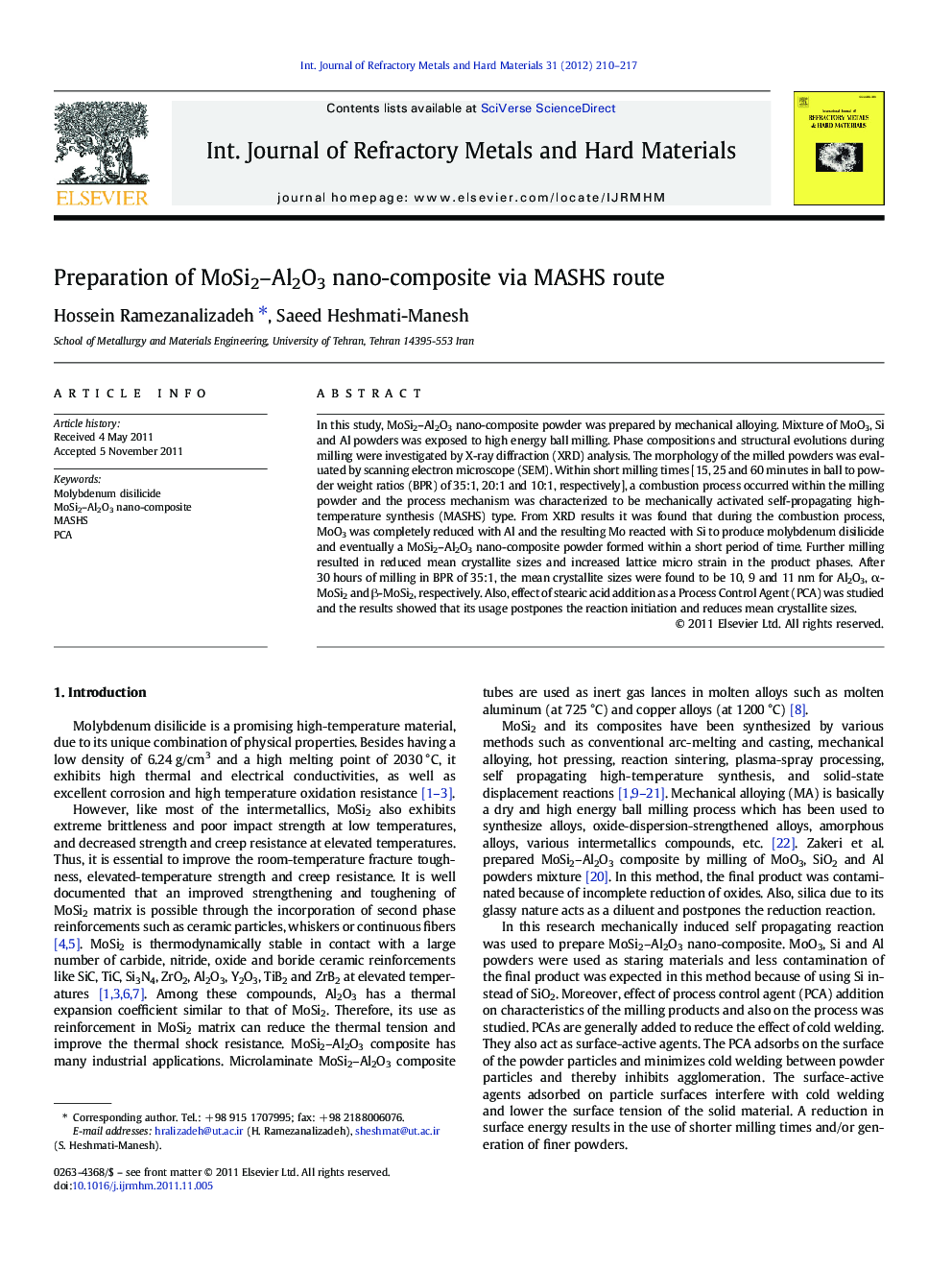| Article ID | Journal | Published Year | Pages | File Type |
|---|---|---|---|---|
| 1603841 | International Journal of Refractory Metals and Hard Materials | 2012 | 8 Pages |
In this study, MoSi2–Al2O3 nano-composite powder was prepared by mechanical alloying. Mixture of MoO3, Si and Al powders was exposed to high energy ball milling. Phase compositions and structural evolutions during milling were investigated by X-ray diffraction (XRD) analysis. The morphology of the milled powders was evaluated by scanning electron microscope (SEM). Within short milling times [15, 25 and 60 minutes in ball to powder weight ratios (BPR) of 35:1, 20:1 and 10:1, respectively], a combustion process occurred within the milling powder and the process mechanism was characterized to be mechanically activated self-propagating high-temperature synthesis (MASHS) type. From XRD results it was found that during the combustion process, MoO3 was completely reduced with Al and the resulting Mo reacted with Si to produce molybdenum disilicide and eventually a MoSi2–Al2O3 nano-composite powder formed within a short period of time. Further milling resulted in reduced mean crystallite sizes and increased lattice micro strain in the product phases. After 30 hours of milling in BPR of 35:1, the mean crystallite sizes were found to be 10, 9 and 11 nm for Al2O3, α-MoSi2 and β-MoSi2, respectively. Also, effect of stearic acid addition as a Process Control Agent (PCA) was studied and the results showed that its usage postpones the reaction initiation and reduces mean crystallite sizes.
► In this study, MoSi2-Al2O3 nano-composite powder was successfully prepared by mechanical alloying. ► Mixture of MoO3, Si and Al powders was exposed to high energy ball milling. ► The milling times required for initiation of the reaction is 15, 25 and 60 minutes in BPR of 35, 20 and 10:1, respectively. ► The process mechanism was characterized to be mechanically activated self-propagating high temperature synthesis type. ► Using of stearic acid as a Process Control Agent (PCA) postpones the reaction initiation and reduces mean crystallite sizes.
